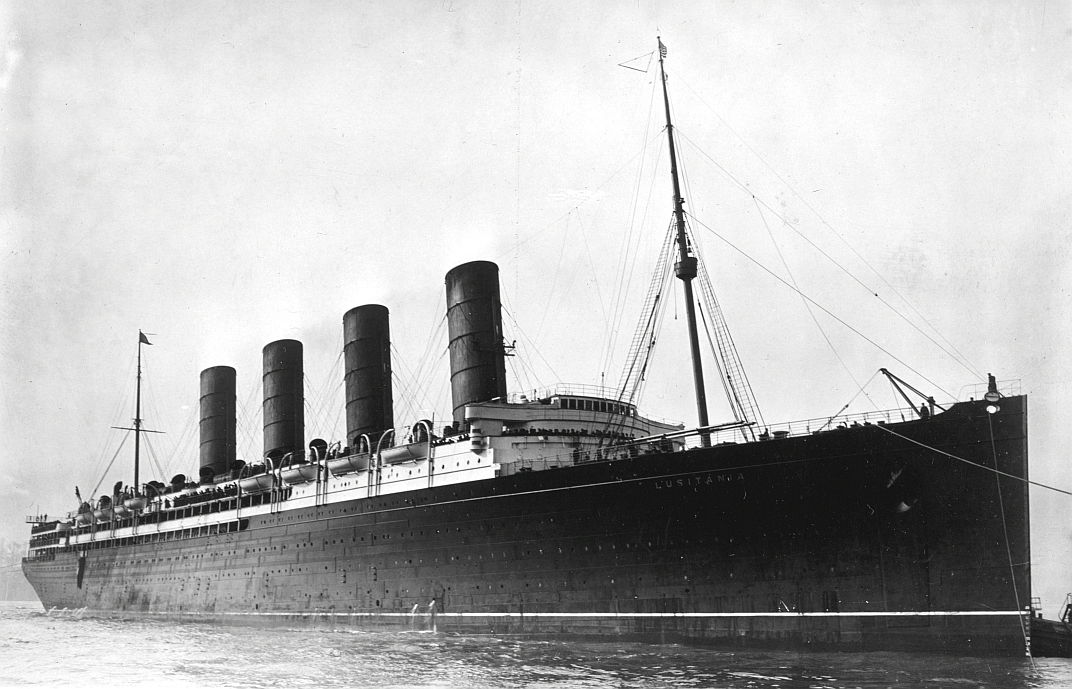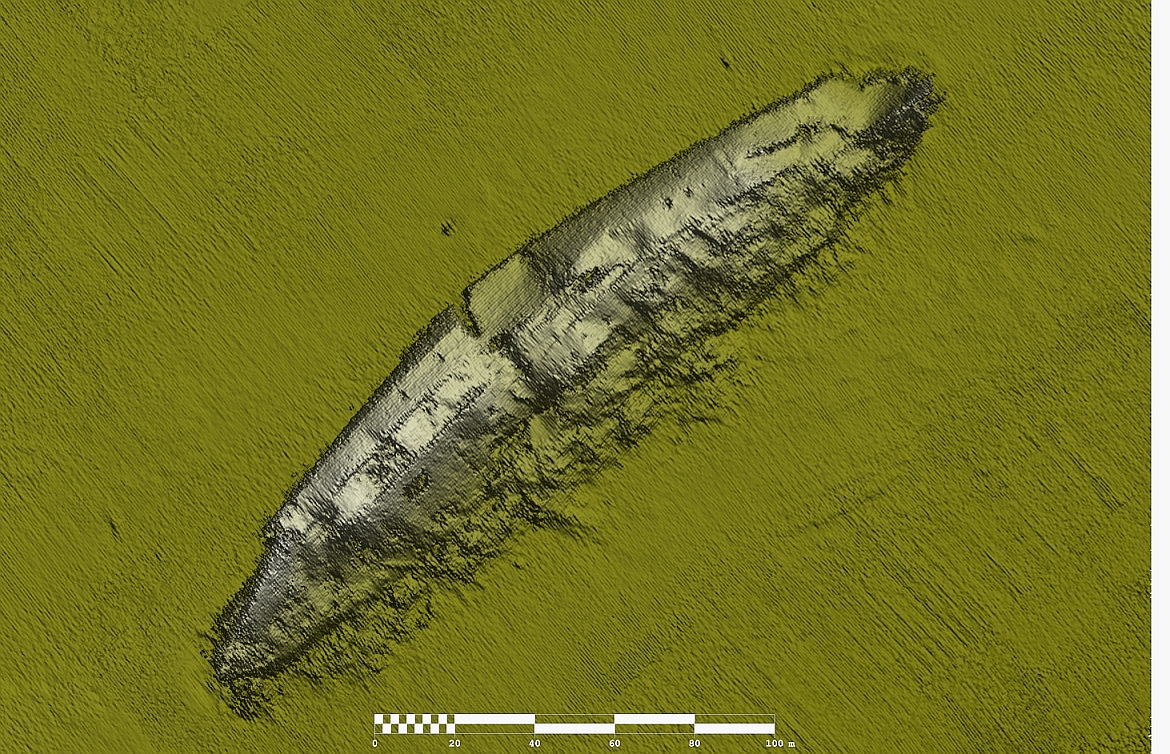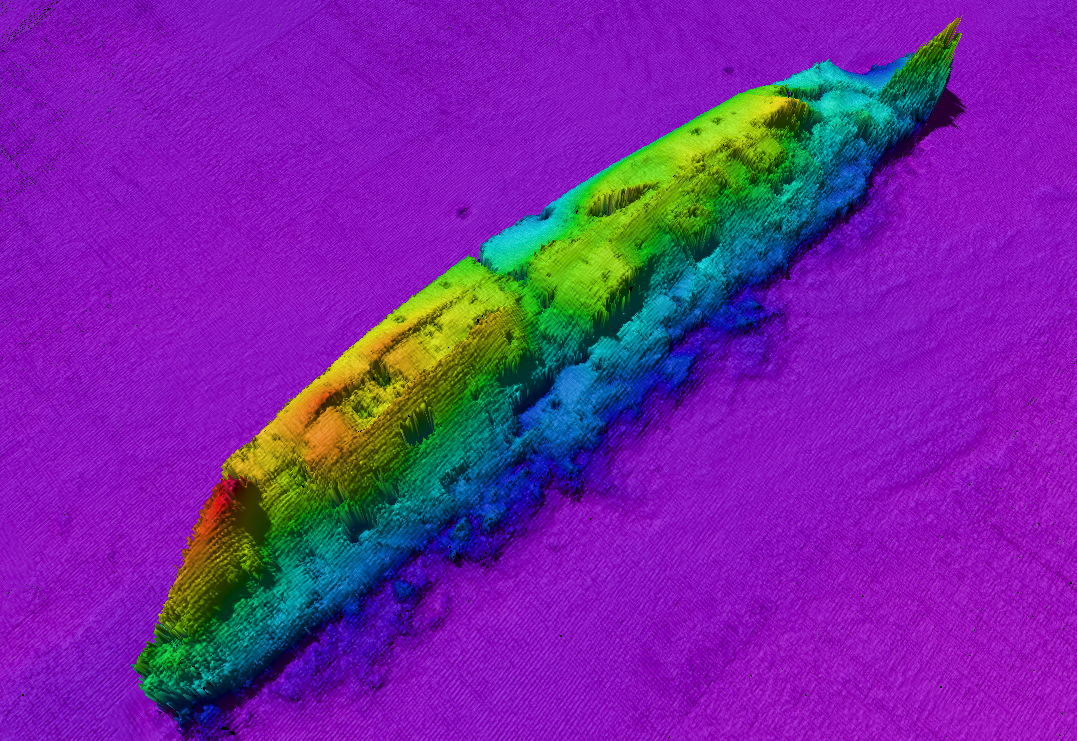 One hundred years after the torpedoing and sinking of RMS Lusitania, new sonar images of the wreck have been published showing a most detailed information and overview of the wreck site compiled to date.
One hundred years after the torpedoing and sinking of RMS Lusitania, new sonar images of the wreck have been published showing a most detailed information and overview of the wreck site compiled to date.
The current condition of the RMS Lusitania on the seafloor, 100-years after its sinking on 7 May 1915, is revealed in greater detail than ever before. The imagery provides a sense of the scale and history of the site, a tangible connection to the wreck and to the dramatic and tragic events that surrounded its sinking. The 240m long vessel is clearly defined on the sea floor, lying on its starboard side and standing over 14m high above the seabed.
The images were produced by members of the INFOMAR (INtegrated Mapping FOr the Sustainable Development of Ireland's Marine Resource) team from the Geological Survey of Ireland (GSI) and the National Monuments Service of the Department of Arts, Heritage and the Gaeltacht.
 Energy & Natural Resources Minister Joe McHugh said the detailed information and overview of the wreck site provides a solid framework upon which new research and analysis can be based.
Energy & Natural Resources Minister Joe McHugh said the detailed information and overview of the wreck site provides a solid framework upon which new research and analysis can be based.
Arts, Heritage and the Gaeltacht Minister Heather Humphreys said: “It is fitting that these images are being in the centenary year of the sinking of the Lusitania. The imagery will provide important information on how the shipwreck has changed over the last 100 years.
“This new survey data is extremely important from a site protection point of view. It will add to our knowledge and understanding of the wreck site on the seabed, its current condition and how the site has changed or degraded over the years. Additionally, the data, in tandem with previous information from individual divers to the site, will be very beneficial in developing our understanding of the physical processes at play at the wreck site and in the surrounding seabed and should help inform long term management strategies for protecting, investigating and conserving the wreck.”#
RMS Lusitania was briefly the world's largest passenger ship and the fastest ship in the north Atlantic. Built in Glasgow, she was launched by the Cunard Line in 1906 and regularly sailed bwteeen Liverpool and New York at a time of fierce competition for the North Atlantic trade. She was torpedoed and sunk in 1915 by a German U-boat, causing the deaths of 1,198 passengers and crew. The wreck now lies on its starboard side and measures 240m in length.
The ship's owner Cunard has commissioned a memorial plaque, which will be dedicated today during a service at Liverpool Parish Church. Actors Joe McGann and Roy Carruthers will read first-hand accounts from survivors.
A painting by the artist Anthony Brown, whose great-grandfather was on the Lusitania's final voyage, will be put on display for the first time.
The service will be followed in Liverpool by a walk of remembrance to the Lusitania's salvaged propeller, now located at the city's Pier Head.
The disaster will also be commemorated at Cobh in the Republic of Ireland, where many victims were buried after the sinking. Last weekend, a service was held in the Isle of Man from where a fishing boat rescued about 150 people.
